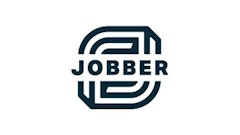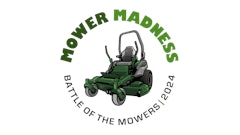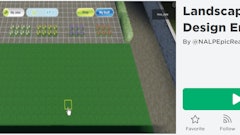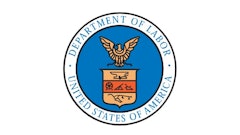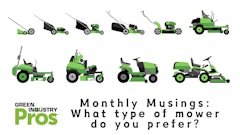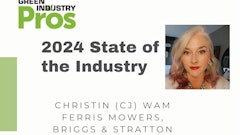
Jeremy Wishart, senior programs manager for the Propane Education & Research Council (PERC), told Green Industry Pros at GIE+EXPO 2013 this past October that propane mowers could eventually account for roughly 10% of the commercial mowers being used in the U.S. Now into 2014, Wishart is not backing off of that statement—for good reason.
There was a flurry of late-season activity from landscape contractors to close 2013. The number of contractors participating in PERC's propane mower incentive program jumped from 925 to over 1,000 in the final two months of the year. Thus, Wishart and the PERC team are feeling as confident as ever about the acceptance of propane in the lawn maintenance industry.
"It (10% market share) sounds like a lofty goal, but we firmly believe it's realistic, given the kind of effort and resources we're putting behind the landscape market," Wishart says. "When you look at both conversions of existing gas mowers and new propane mower purchases, we're somewhere in the 3-5% range right now. Getting to 10% will probably take another two to four years. We will continue with the product development and market development programs we've already been doing."
Mostly new purchases, but conversions still important
Roughly 75% of the PERC-approved incentive applications have been for new propane mowers. The other 25% have been for certified conversions of gas mowers. Wishart expects that ratio to maintain itself.
"There are thousands of in-service gas mowers out there that could be converted to propane," Wishart points out. "Also, some contractors prefer to stick with conversion kits because they are able to take an existing kit off of an existing mower and install that kit on a new mower; provided that the new mower has a similar engine. That way the contractor doesn't have to assume the conversion costs every time he buys a new mower." This is why Wishart doesn't think we'll see a time, at least in the foreseeable future, where 100% of the incentive applications are for new mower purchases. Conversion kits will remain an important component in the ongoing adoption of propane by this industry.
That said, new mower purchases still dominate. It's an evolving number, but roughly 16 mower manufacturers now offer propane-powered models. And although zero-turn riders are by far the most popular option, many manufacturers are expanding propane to other types of mowers. For example, Ventrac's 4500 articulating tractor offers a propane option.
"Wide-area walk-behinds are also relatively new when it comes to propane," Wishart cites as another example. "Exmark has been offering propane walk-behinds for a while, but their new EFI option should really help move the numbers." Both the Exmark Turf Tracer S-Series and X-Series of intermediate walk-behind mowers offer propane models. Each can be powered by a Kohler EFI (electronic fuel injection) propane engine.
"Simply put, we're seeing increased demand from both contractors and manufacturers for propane walk mowers, along with stand-on mowers," Wishart adds. "All of these mowers have engines that are in the same category, so it makes a lot of sense. You saw that from John Deere this past October at GIE+EXPO."
John Deere announced that it is working with a company called Tech Services to train and supply Deere dealers with certified propane conversion kits. The kits, designed and manufactured by EnviroGard, are available for John Deere ZTrak zero-turn mowers, QuikTrak stand-on mowers and commercial walk-behinds. Another propane conversion company, Metro Lawn, has a similar arrangement with Excel Industries, maker of Hustler- and BigDog-branded mowers.
Building the market for propane
Equipment dealers are expected to continue playing a pivotal role in advancing the proliferation of propane-powered mowers in the marketplace. In addition to end-users (contractors), PERC has also had an incentive plan in place for dealers since 2012. That will continue.
"Winning over dealers will ultimately help us achieve our goal of 10% market share," Wishart explains. "It's important for the dealer to give contractors a chance to see and try a propane mower in their own operations. So we have to continue encouraging dealers to do that, which means we have to educate dealers and get them feeling comfortable about this technology and the availability of propane fuel."
PERC initially had a goal of partnering with four or five manufacturers on the dealer incentive program. They're now up to seven: BOB-CAT, Exmark, Gravely, Husqvarna, Kubota, Toro and Ventrac. "We wanted to place around 300 demo mowers in dealerships in 2013," Wishart adds. "Some different market forces made this a challenge, but we got up over 200. And we're moving forward. We've improved the program so it's a lot easier for dealers to manage. The Dealer Demo Program will also be continuing, and we’re implementing some positive improvements in 2014, which will make it more beneficial and easier to implement."
Alliances such as Tech Services/John Deere and Metro Lawn/Hustler-BigDog should help quite a bit. "It's all about getting down to the dealer level, training technicians and getting them comfortable with the conversion process and propane itself," Wishart reminds.
Contractors must also feel comfortable with propane. More are, as more than 1,000 contractors from 39 states have applied for PERC incentives thus far.
"We're certainly seeing some regions of the country that are taking to propane a little faster, such as areas faced with ozone action days," Wishart says. "But we're also seeing the adoption of propane mowers elsewhere, like Louisiana, Ohio, Oregon, and in Missouri which has a robust state incentive program. And it's not just huge maintenance companies that are applying for 20 or 25 incentives. We are seeing smaller mom-and-pop type companies that are applying for one or two. It's starting to take hold everywhere—which is why we think we'll eventually get to 10% market share."






